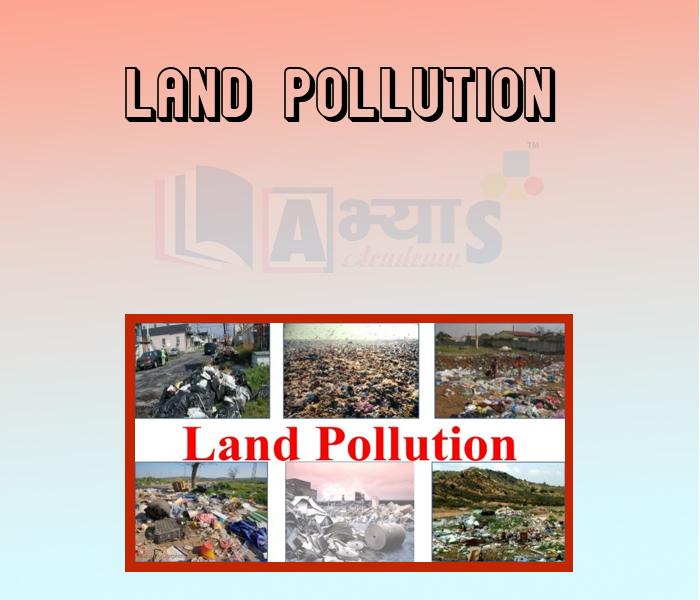Land Pollution











Land Pollution
Environmental Pollution: Pollution is generally defined as an undesirable and excessive addition of any substance to environment, specifically water, air and land, which adversely alters the natural quality of the environment.
Land pollution: A thin mantle represents the area of earth, which is capable of supporting life, and there is a very complex relationship between this land and the other components of the environment. Man and other animals exhaust the resources of a given area. Therefore, the natural forces cannot maintain the balance between the materials consumed and returned to the soil.
The major sources of land pollution are the industries such as pulp and paper mills, oil refineries, power and heating plants, chemical and fertiliser manufacturing plants, iron and steel plants, plastic and rubber producing complexes, emission of polluted gases from motor vehicles and so on. Modern agriculture has been heavily involved in polluting soil through the non-judicious use of chemical fertilisers, herbicides, insecticides, and fumigants. Most of these are stable chemicals and remain in the soil for long periods without degradation, and have cumulative effect. Apart from killing the living organisms present on the surface of the soil, they reach even the deeper layers through tilling and irrigation of the land, killing still more living forms. With their continuous use, the soil microorganisms lose their ability of nitrogen fixation.
Management of Pollutants: Appropriate methods should be developed to dispose off or utilise the pollutants. Low-lying watery areas and ditches can also be filled, and the land thus reclaimed can be used for making gardens, parks, playgrounds or even apartment complexes. Animal refuse and agriculturral wastes can be utilised as manure and for the production of biogas that in turn can help to generata electricity.
Students / Parents Reviews [10]
It has a great methodology. Students here can get analysis to their test quickly.We can learn easily through PPTs and the testing methods are good. We know that where we have to practice

Barkha Arora
10thOne of the best institutes to develope a child interest in studies.Provides SST and English knowledge also unlike other institutes. Teachers are co operative and friendly online tests andPPT develope practical knowledge also.

Aman Kumar Shrivastava
10thMy experience was very good with Abhyas academy. I am studying here from 6th class and I am satisfied by its results in my life. I improved a lot here ahead of school syllabus.

Ayan Ghosh
8thIt was good as the experience because as we had come here we had been improved in a such envirnment created here.Extra is taught which is beneficial for future.

Eshan Arora
8thMy experience with Abhyas is very good. I have learnt many things here like vedic maths and reasoning also. Teachers here first take our doubts and then there are assignments to verify our weak points.

Shivam Rana
7thBeing a parent, I saw my daughter improvement in her studies by seeing a good result in all day to day compititive exam TMO, NSO, IEO etc and as well as studies. I have got a fruitful result from my daughter.

Prisha Gupta
8thAbhyas is a complete education Institute. Here extreme care is taken by teacher with the help of regular exam. Extra classes also conducted by the institute, if the student is weak.

Om Umang
10thIt was a good experience with Abhyas Academy. I even faced problems in starting but slowly and steadily overcomed. Especially reasoning classes helped me a lot.

Cheshta
10thMy experience with Abhyas academy is very good. I did not think that my every subject coming here will be so strong. The main thing is that the online tests had made me learn here more things.

Hiya Gupta
8thI have spent a wonderful time in Abhyas academy. It has made my reasoning more apt, English more stronger and Maths an interesting subject for me. It has given me a habbit of self studying
